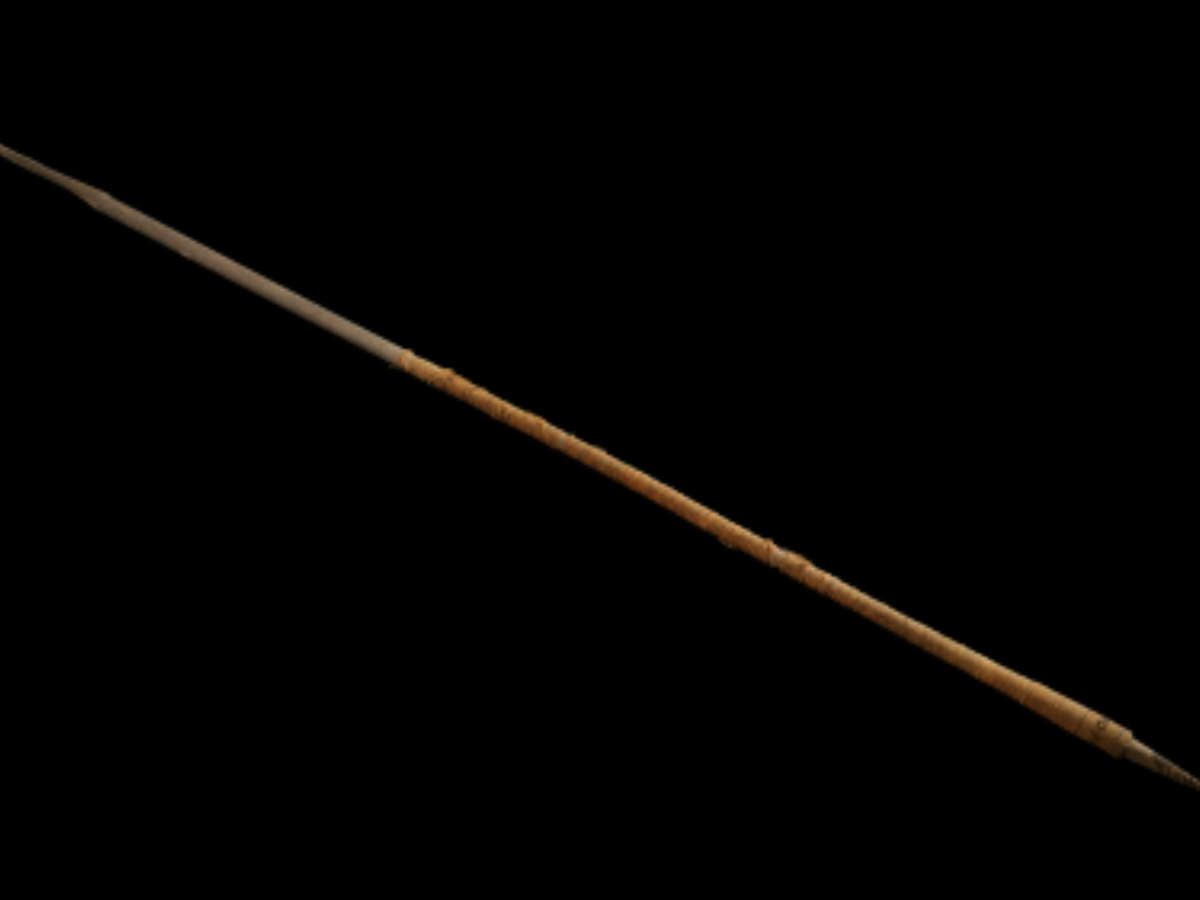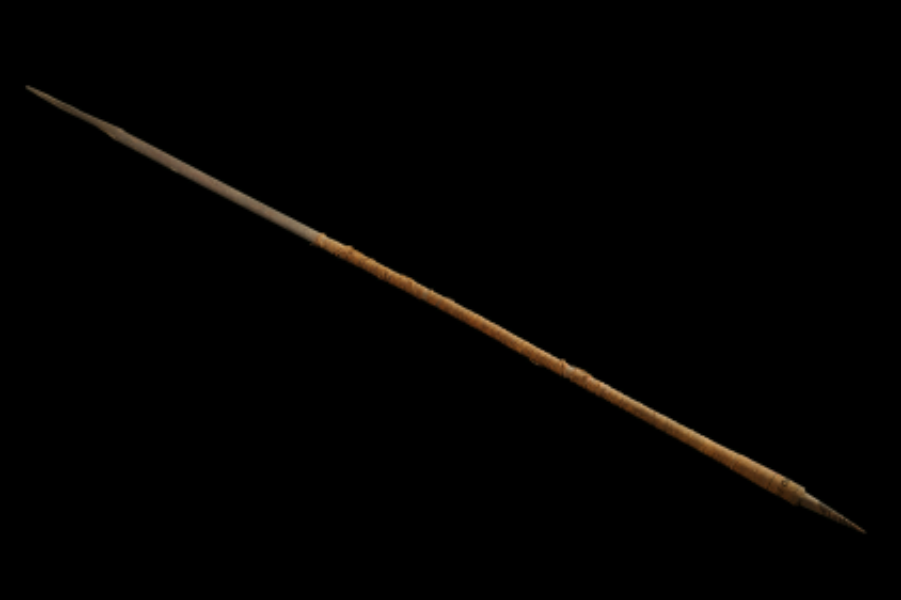State
Tribe Name
Art Type
short description
The traditional spear of the Nagas from Nagaland is known for its martial heritage and warrior ethos. It differs from the iron-tipped spears of many other tribes in that it is made entirely out of wood. Hence, it is surmised that the spear could have been used mainly in cultural or ceremonial contexts and not as much for hunting or warfare. The wooden construction, sleek and fine, reveals the woodworking prowess of the tribe, which used many of the locally available hardwoods for durability and strength. Such a simple design may point toward a training spear, a ritual object, or a symbolic weapon used during various traditional festivals of Nagas like Sekrenyi or the Hornbill Festival, in which martial performances abound.
Thumbnail

Filter Postion
Left
Filter Background
Off
Theme
Filter Header Image

content
Image

description
The traditional spear of the Nagas from Nagaland is known for its martial heritage and warrior ethos. It differs from the iron-tipped spears of many other tribes in that it is made entirely out of wood. Hence, it is surmised that the spear could have been used mainly in cultural or ceremonial contexts and not as much for hunting or warfare. The wooden construction, sleek and fine, reveals the woodworking prowess of the tribe, which used many of the locally available hardwoods for durability and strength. Such a simple design may point toward a training spear, a ritual object, or a symbolic weapon used during various traditional festivals of Nagas like Sekrenyi or the Hornbill Festival, in which martial performances abound.
In the tradition of the Naga warrior, these spears were much more than tools; they were extensions of one's identity, often embodying bravery, sustenance, and the very spiritual presence of the tribe. These weapons bore meaning even when created from the most humble materials of wood.
Today, such artifacts are preserved in collections such as that in the Indian Museum, Kolkata, as material links to the ancestral practices of Northeast India and the artistic heritage of tribal communities.
In the tradition of the Naga warrior, these spears were much more than tools; they were extensions of one's identity, often embodying bravery, sustenance, and the very spiritual presence of the tribe. These weapons bore meaning even when created from the most humble materials of wood.
Today, such artifacts are preserved in collections such as that in the Indian Museum, Kolkata, as material links to the ancestral practices of Northeast India and the artistic heritage of tribal communities.
Image Mode
landscape
promoted
On
Verified
Off
